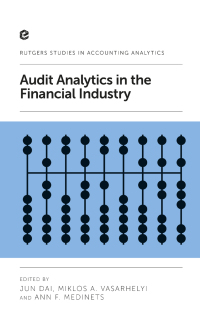Question
Intermediate Accounting Volume 1 (12th Canadian Edition) CA5.1 In the late 1990s, CIBC helped Enron Corporation structure 34 loans that appeared in the financial statements
Intermediate Accounting Volume 1 (12th Canadian Edition)
CA5.1 In the late 1990s, CIBC helped Enron Corporation structure 34 loans that appeared in the financial statements as cash proceeds from sales of assets. Enron subsequently went bankrupt in 2001 and left many unhappy investors and creditors with billions of dollars lost. In December 2003, CIBC settled four regulatory investigations with the U.S. Securities and Exchange Commission, U.S. Federal Reserve, U.S. Justice Department, and Canadian Office of the Superintendent of Financial Institutions. The settlement, which amounted to U.S. $80 million, was then one of the largest regulatory penalties against a Canadian bank. The regulatory authorities felt that CIBC had aided Enron in boosting its earnings and hiding debt. CIBC set aside a $109-million reserve in early 2003 in preparation for this settlement. No additional reserves were set aside. As part of the settlement, CIBC agreed to get rid of its structured financing line of business (where all of these loans were created). Bank management noted that the decision to get rid of the structured financing business would reduce annual earnings by 10 cents a share. The bank had previously reported annual earnings of $5.21 per share. In addition, the bank had to accept the appointment of an outside monitor whose role, among other things, would be to review the bank's compliance with the settlement. Strategically, the bank had already reduced its emphasis on corporate lending (having suffered heavy losses in 2002) in favour of an increased focus on earnings from branch banking operations. At the end of 2003, CIBC was still owed $213 million by Enron. There were many additional Enron-related lawsuits pending against the bank, but the bank announced that the lawsuits were without merit. The bank had insurance against many of these claims and noted that it planned to vigorously defend itself. In 2005, the bank settled a lawsuit with institutional investors, paying $2.4 billion, again setting a standard for the size of the settlement. Then in 2009, the Canada Revenue Agency (CRA) challenged the bank regarding the tax deductibility of the payment. In Note 20 to CIBC's annual financial statements for the year ending October 31, 2017, relating to the subject of income taxes, the bank updated the outstanding issue. CIBC stated that the Tax Court of Canada trial on the deductibility of the Enron payments was scheduled to begin in 2018. As well, CIBC stated that, should it successfully defend its tax filing position in its entirety, the bank would recognize an additional accounting tax benefit of $231 million and taxable refund interest of approximately $198 million. Should CIBC fail to defend its position in its entirety, the bank would incur an additional tax expense of approximately $820 million and non-deductible interest of approximately $157 million.
Discuss any financial reporting issues relating to CIBC's 2003 and 2017 financial statements. Use the conceptual framework noted in Chapter 2 for the analysis.
Step by Step Solution
There are 3 Steps involved in it
Step: 1

Get Instant Access to Expert-Tailored Solutions
See step-by-step solutions with expert insights and AI powered tools for academic success
Step: 2

Step: 3

Ace Your Homework with AI
Get the answers you need in no time with our AI-driven, step-by-step assistance
Get Started


